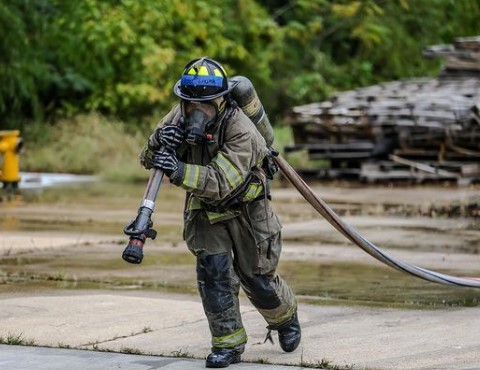Self-Contained Breathing Apparatus (SCBA) systems have long been synonymous with firefighting, providing essential respiratory protection in smoke-filled environments. However, the utility of SCBA technology extends far beyond the realm of firefighting. These sophisticated systems play a critical role in various industries and scenarios, ensuring safety where breathable air is compromised. This article explores the diverse applications of SCBA technology, underscoring its importance across different fields.
Industrial Applications
In industrial settings, particularly in chemical manufacturing plants, refineries, and pharmaceutical industries, workers are often exposed to hazardous substances. SCBA systems are vital in these environments, offering protection against toxic gases, vapors, and particulates. They ensure that employees can perform their duties safely, even in the event of accidental releases or during routine maintenance tasks that might disturb hazardous materials.
Hazardous Material Response
Emergency response teams tasked with handling hazardous materials (HazMat) incidents rely on SCBA systems for protection against a wide array of chemical, biological, radiological, and nuclear threats. Whether responding to industrial accidents, transportation incidents involving dangerous goods, or acts of terrorism, SCBA technology is crucial for ensuring the safety of first responders as they contain the hazard and mitigate its impact on the public and the environment.
Confined Space Rescue
SCBA technology is indispensable in confined space rescue operations. Confined spaces, such as tanks, silos, sewers, and tunnels, can accumulate toxic gases or have oxygen-deficient atmospheres. Rescue teams equipped with SCBA systems can safely enter these environments to perform rescue and recovery operations, protecting both the rescuers and those being rescued.
Mining Operations
The mining industry poses unique respiratory challenges due to the presence of dust, gases, and reduced oxygen levels underground. SCBA systems provide miners with a reliable source of breathable air, especially during emergencies such as mine collapses or fires, ensuring that they have the necessary protection to escape or be rescued.
Maritime and Offshore Applications
In the maritime and offshore oil and gas sectors, SCBA systems are essential for combating onboard fires and dealing with gas leaks. Given the isolated nature of ships and platforms, having immediate access to SCBA technology is crucial for survival until external help can arrive.
The Role of Carbon Fiber Cylinders
A key component of SCBA systems is the air cylinder, which stores the compressed air breathed by the user. Recent advancements have seen the adoption of carbon fiber composite cylinders, which are significantly lighter than traditional steel or aluminum cylinders. This reduction in weight, often more than 50%, is a boon for users who need to remain agile and mobile while wearing SCBA equipment. The durability and safety of these carbon fiber cylinders, coupled with their extended service life of up to 15 years, make them an ideal choice for SCBA applications across various industries.
Training and Simulation
Effective SCBA use requires rigorous training to ensure users can don and operate the equipment confidently and efficiently. Many organizations invest in training programs and simulation exercises to prepare their personnel for real-life scenarios. This not only enhances safety but also ensures that individuals can make the most of the protective capabilities offered by SCBA technology.
Future Developments
As industries evolve and new challenges arise, SCBA technology continues to advance. Manufacturers are focusing on improving the ergonomics, capacity, and monitoring capabilities of SCBA systems. Innovations such as integrated communication devices, heads-up displays, and real-time air monitoring are enhancing the functionality and safety of SCBA units, broadening their applications even further.
Conclusion
SCBA technology is a lifeline in environments where air quality cannot be guaranteed. Beyond firefighting, its applications span industrial manufacturing, hazardous material response, confined space operations, mining, maritime and offshore activities, and more. The incorporation of carbon fiber composite cylinders into SCBA systems marks a significant advancement, offering users improved safety, comfort, and performance. As we look to the future, the continued innovation in SCBA technology promises to expand its role in protecting lives across an even broader range of sectors.
Post time: Mar-11-2024

